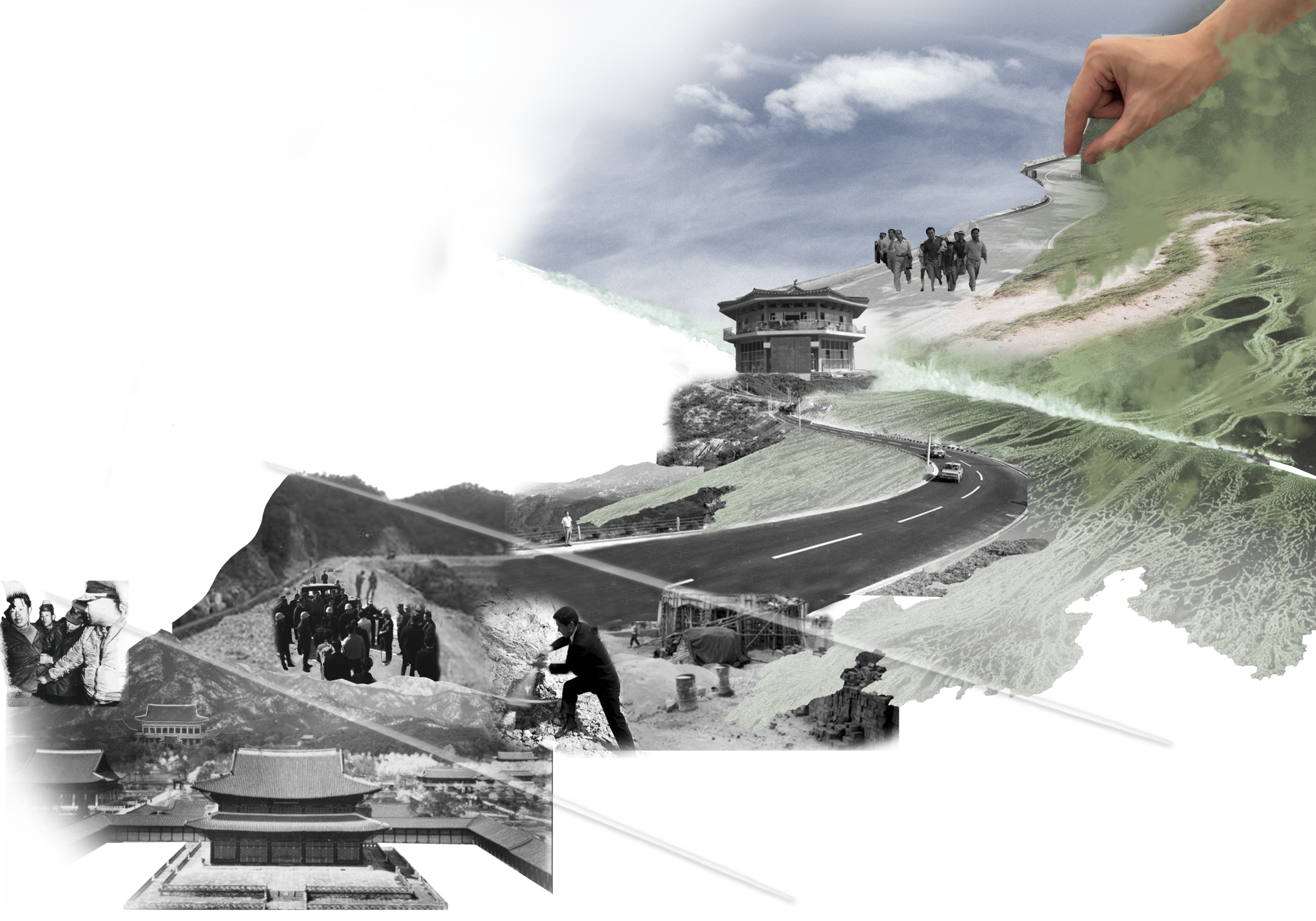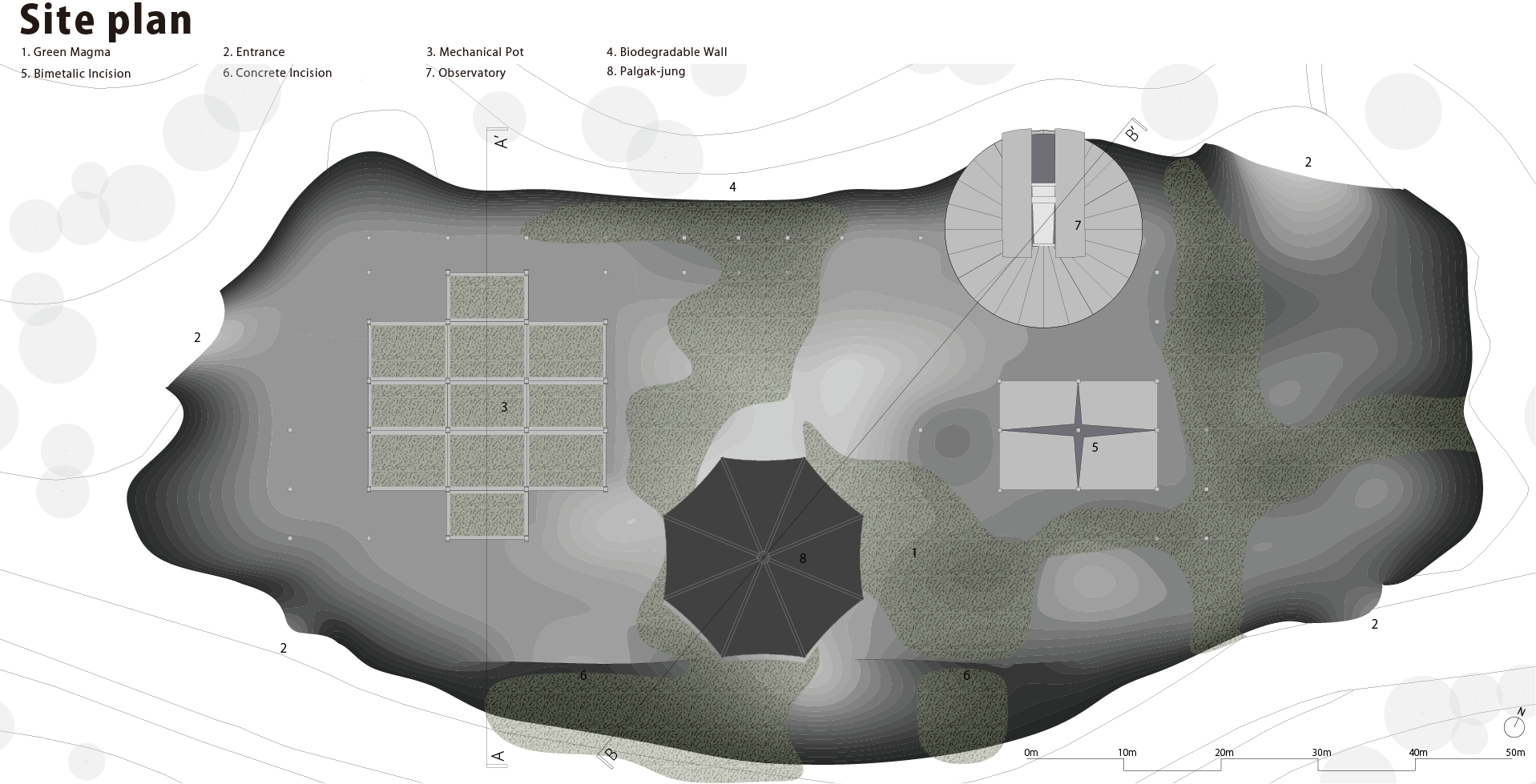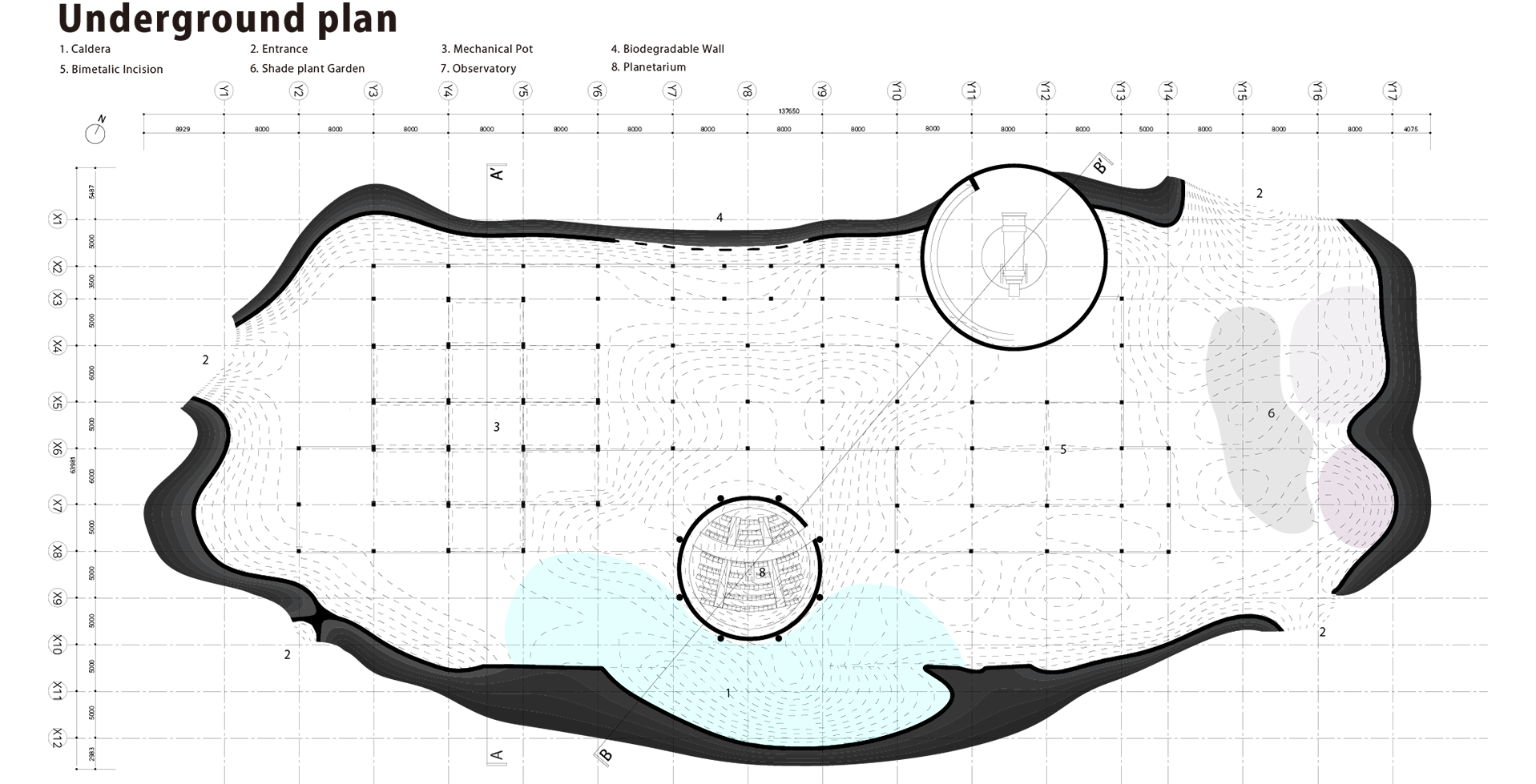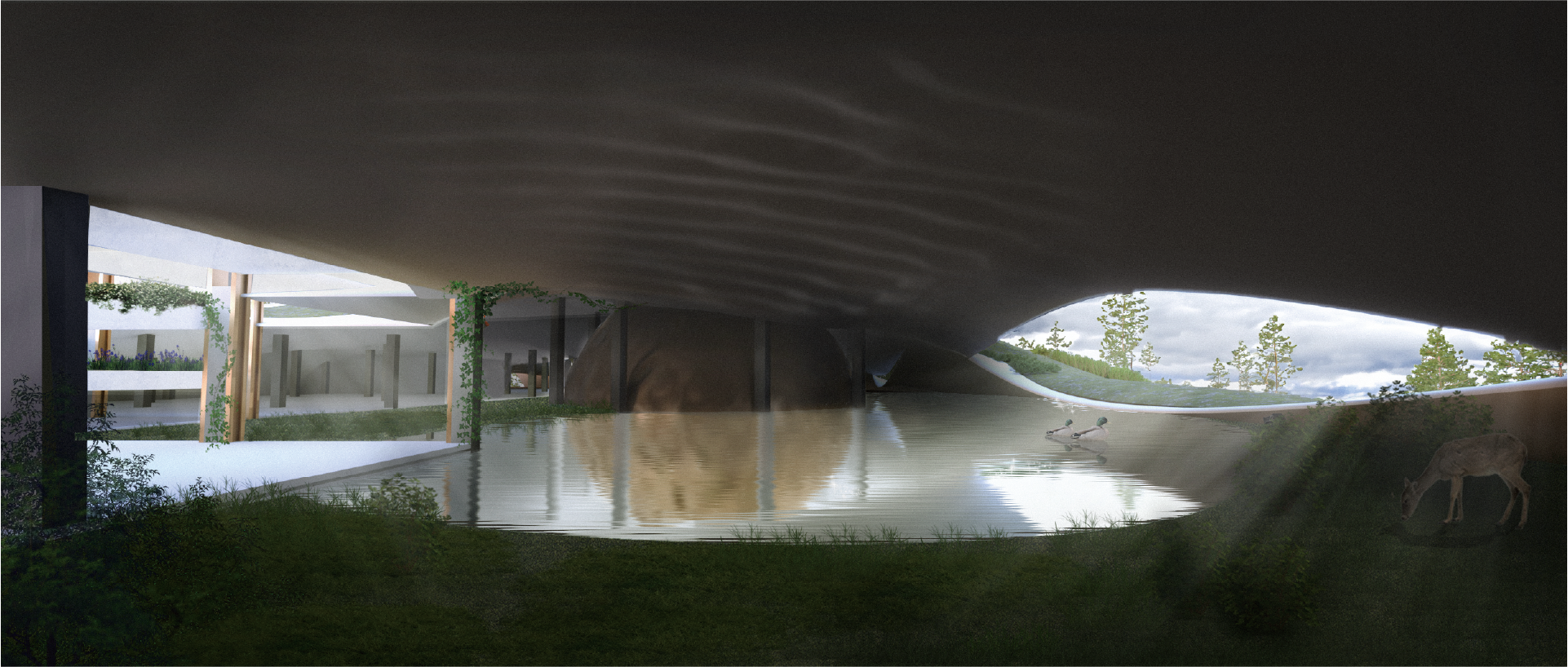민경제_북악스카이피크
팔각정은 근대의 상징이다. 최초의 팔각정인 탑골공원 팔각정은 1897년 고종의 황실 음악 연주소의 목적으로 목조로 건립되었다. 이후 서울을 콘크리트로 채워나가던 1960년대, 박정희 정권은 정통성을 콘크리트로 채우기 시작했다. 공원과 산에 수많은 콘크리트 팔각정들이 생겨났다. 누각 위에 서서 너희들을 내려다보겠다는 권력의 상징이다.
단순히 권력층이 나머지를 내려다보는 것을 넘어서 인간이 자연 위에 군림하는 근대의 상황이 박제된 곳이다.
김신조 사건으로 인해 서울시의 도시계획에 안보라는 개념이 생겼따. 북악산을 가르는 북악스카이웨이가 지어지기 시작했고 관광이라는 대외적인 명분을 채우기 위해 봉우리를 깎아 북악팔각정을 만들었다.
아이러니하게도 북악산이 초록빛이 된 건 근대화 이후의 일이다. 우리나라의 한옥은 실내가 기밀하지 않고 열려 있기에 겨울에 온돌이라는 난방방식이 필수적이였다. 인접한 산의 나무들은 난방을 위한 벌목으로 사라져갔다. 근대화로 인한 화석연료와 전기의 등장으로 벌목행위는 줄어들었고 박정희 정권의 녹화사업을 통해 지금의 산의 모습을 갖추었다. 인간이 개입하여 자연을 더 풍요롭게 만들 수 있다.
하지만 녹화사업은 최종적 목표인 활엽수림 조성까지 나아가지 못하고 침엽수림 조성 과정에 멈추었다. 생물다양성이 부족한 실정이다. 이에 북악팔각정은 이 북악산의 생태계를 더욱 풍요롭게 만들 수 있는 장소로 만들고자 한다. 단순히 자연에게 의탁하는 것이 아니다. 다분히 의도적이고 인공적인 개입으로 우리는 수백년 혹은 수천년 뒤의 산을 근미래에 얻는 것이다.
궁극적인 목표는 북악스카이웨이의 아스팔트를 걷어내고 비포장 도로로 바꾸는 것이다. 그것은 지금 이뤄질 수 없다. 지금 상태가 유지된다면 앞으로도 불가능하다. 하지만 북악팔각정에서 자연의 폭발적인 에너지를 보여준다면, 근대적인 구조체계와 우리의 가치체계가 변화한다면 미래의 시점에 북악스카이웨이의 아스팔트를 걷어낼 수 있을 것이다. 북악스카이피크는 그 과정의 초석이다.
The Octagonal Pavilion is a symbol of modernity. The first octagonal pavilion, located in Tapgol Park, was constructed in 1897 out of wood for the purpose of royal musical performances under King Gojong. In the 1960s, as concrete began to fill Seoul, the Park Chung-hee regime also started to establish its legitimacy through concrete. Numerous concrete octagonal pavilions were built in parks and mountains, serving as a symbol of power, indicating authority looking down upon the people.
It represents not just the elite looking down on the rest but also the modern situation of humans dominating nature. Following the Kim Shin-jo incident, the concept of security was introduced into Seoul's urban planning. The Bukak Skyway, which cuts through Mount Bukak, began construction under the guise of tourism, and the Bukak Octagonal Pavilion was created by cutting down the peaks.
Ironically, it was after modernization that Mount Bukak turned green. Traditional Korean houses, or hanok, were not airtight and required the use of ondol heating in winter. Trees on adjacent mountains were cut down for heating purposes. With the advent of fossil fuels and electricity brought by modernization, deforestation decreased, and the reforestation project under the Park Chung-hee regime shaped the mountains' current appearance. Human intervention can enrich nature.
However, the reforestation project stopped short of its ultimate goal of creating broadleaf forests and halted at the stage of coniferous forests, resulting in a lack of biodiversity. The Bukak Octagonal Pavilion aims to become a place that enriches the ecosystem of Mount Bukak. It's not merely about relying on nature; it's about intentional and artificial intervention to achieve in the near future what might naturally take hundreds or thousands of years.
The ultimate goal is to remove the asphalt from the Bukak Skyway and revert it to an unpaved road. This cannot be achieved now and will remain impossible if the current state is maintained. However, if we demonstrate the explosive energy of nature from the Bukak Octagonal Pavilion, and if our modern structural and value systems change, it may be possible in the future to remove the asphalt from the Bukak Skyway. The Bukak Sky Peak is the cornerstone of this process.









